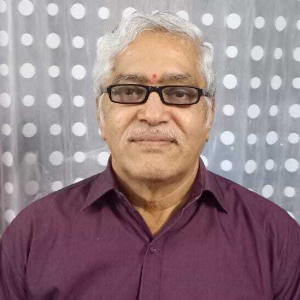Title : Dietary fiber, physical, physico-chemical studies of paddy varieties before and after inducing retrogradation; Sedimentation value, starch content, in-vitro starch digestibility of rice products
Abstract:
Five different varieties of paddy (four pigmented and one non-pigmented) were shelled and milled in pre and post parboiled form, their dietary fiber contents were estimated. Under similar conditions of milling, raw rice showed a high degree of polish (DOP), 9-12 % and parboiled rice showed low DOP, 4.6-6.6%. Dietary fiber content was high in pigmented rice, 9-10 % compared to non pigmented, ~6 %. Soluble fiber content in pigmented head rice (dehusked) varied from 1 to 1.5 % and in its brokens varied from 0.45 to 1.45 %. Dietary fiber content was low by about 1% in parboiled rice. In the parboiled rice of pigmented varieties, the total fiber content varied from 7.95 ± 0.15 to 9.05 ± 0.25 g/100 g and the soluble fiber content varied from 0.7 to 0.9 %. In milled parboiled rice the respective values were 5 ± 0.4 to 6 ± 0.1 % and 0.85 ± 0.05 to 1.25 ± 0.05 %. However, the soluble fiber content in the non-pigmented brown rice, IR-64 remained same after parboiling, 0.75 ± 0.5 %. Milled parboiled rice showed higher soluble dietary fiber compared to milled raw rice. In conclusion, dietary fiber was high in pigmented rice varieties when compared with non pigmented rice. Normalized grain weight, porosity of parboiled paddy (PP) and its de-husked rice (DR), were high compared to their respective native. True and bulk density were lowest for black variety, its DR, its raw and parboiled forms com pared to other varieties of paddy. Angle of repose increased from raw paddy to PP whereas it decreased from raw DR to parboiled DR. Under similar conditions of milling of DR, raw and parboiled milled rice of black variety was the darkest. Raw husk showed higher EMC compared to husk of parboiled. Hardness followed the pattern: Raw: Paddy (~230–280 N)>DR (~120–260 N)>Milled rice (~110 N); for parboiled: DR (~270–480 N)>PP (~260–425 N)> Parboiled milled rice (~250–340 N). Cooking time was high for DR of parboiled ones and least for waxy raw milled rice. Results of this study will be helpful in understanding the quality of pigmented rice cultivars, design and fabrication of some of the equipments in rice processing industry. Paddy (Oryza sativa L) (variety ‘IR – 64’), was parboiled, puffed by sand roasting and flaked by edge runner and roller flaker and variations in physical and physico-chemical properties were studied. The equilibrium moisture content was 27.4% in raw rice while it was much higher (38.9–81.0%) in processed rice. Sedimentation vol ume was lowest (6.2 ml) in raw rice and highest (18.8 ml) in popped rice. Starch content was 84.8 and 76.5–83% in raw and processed rice, respectively. In vitro starch digestibility was highest in roller fl aker fl akes and lowest in raw milled rice. Among the ready to eat products, popped rice showed least starch digestibility (~30%).
Audience Take Away:
- The audience will understand the rice technology and they can think about the preparation of rice products.
- If people are interested, they can think about establishing rice products manufacturing units either in combination or individually.
- The audience will pick up simple rice technology, specially Agriculturists, farmers, commercial people who will be in a position to earn their livelihood. They will also understand what is shelling, milling, parboiling, how to prepare rice products. Some of the properties will be much useful to the common people.




